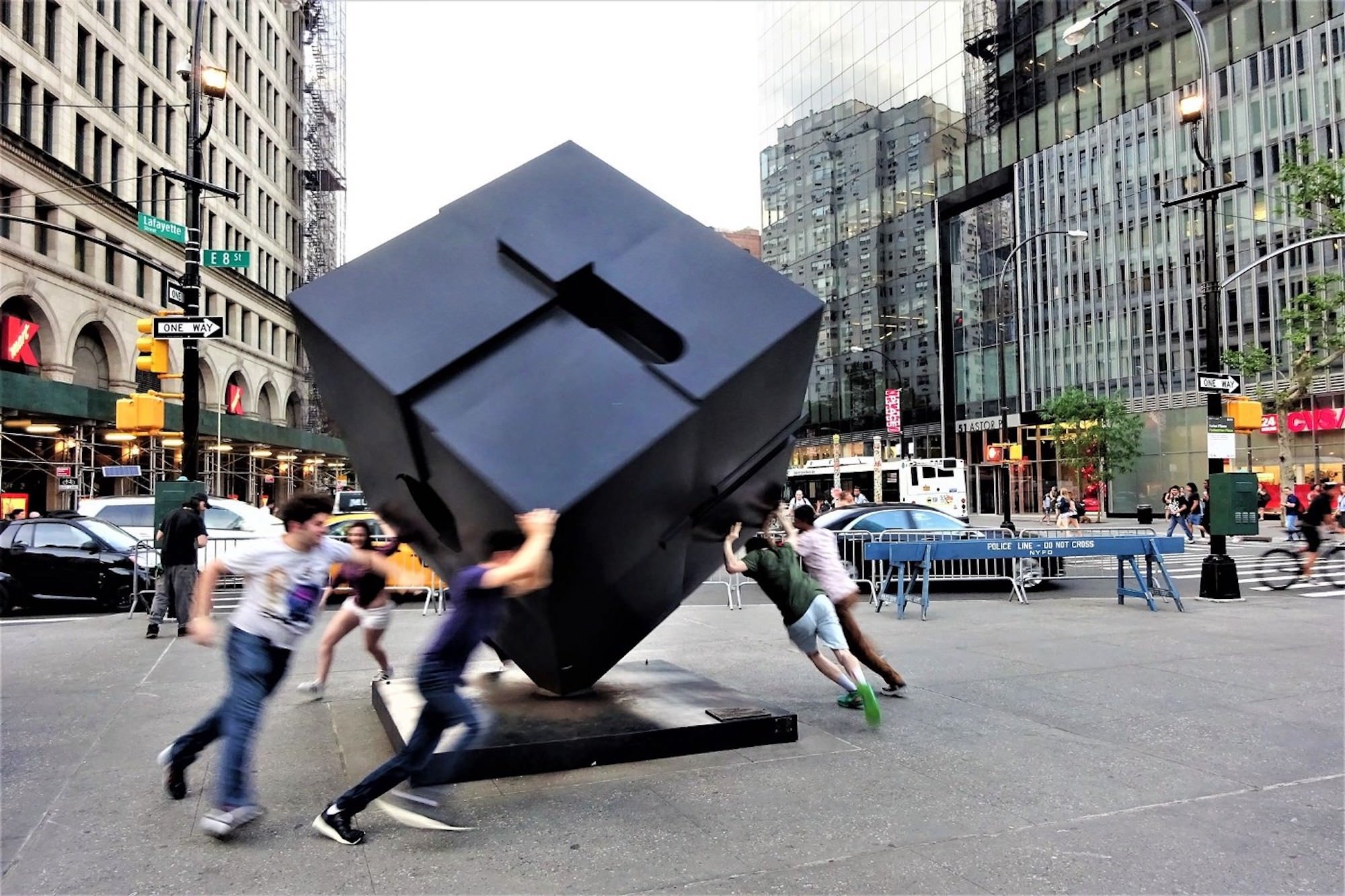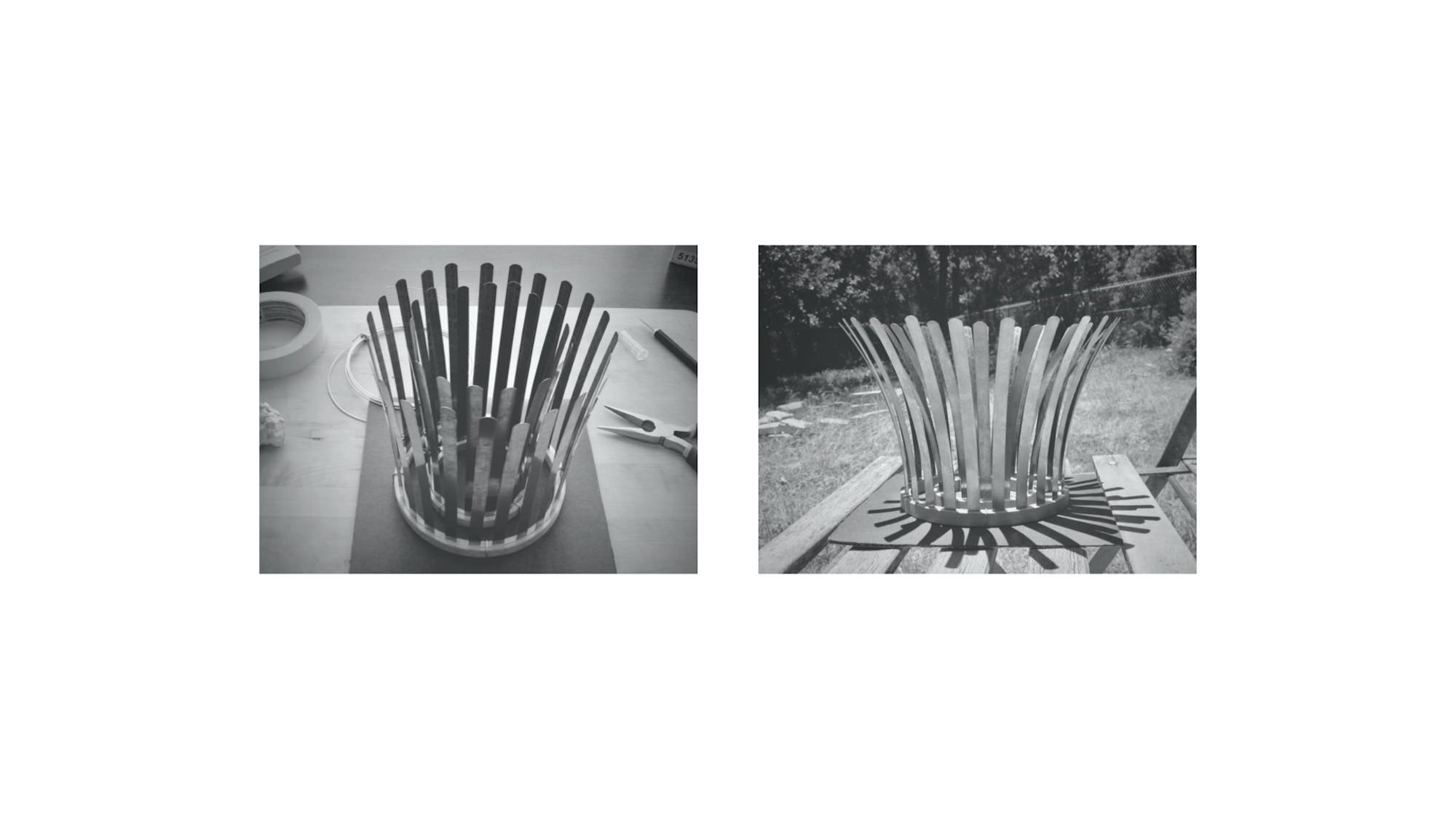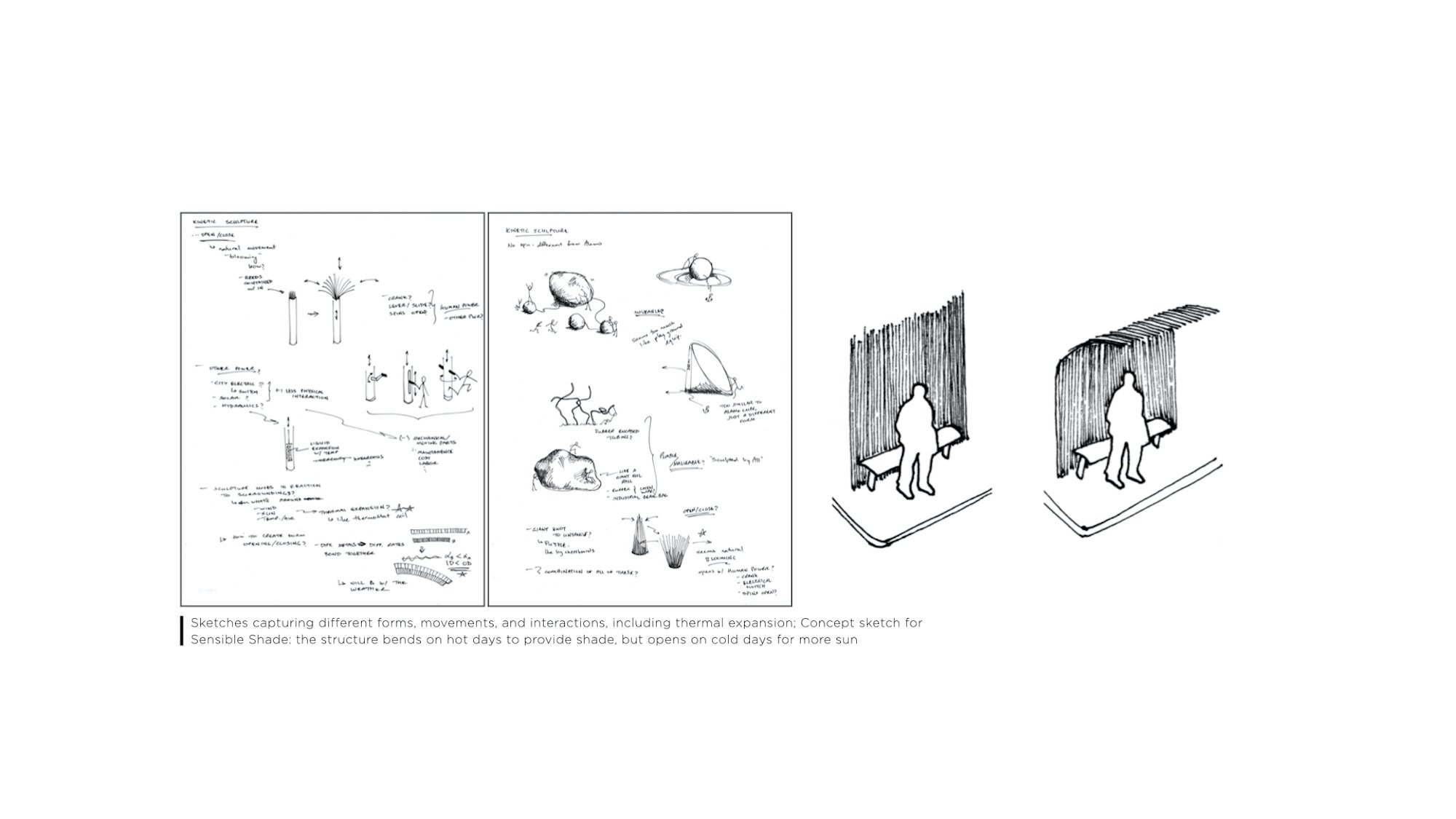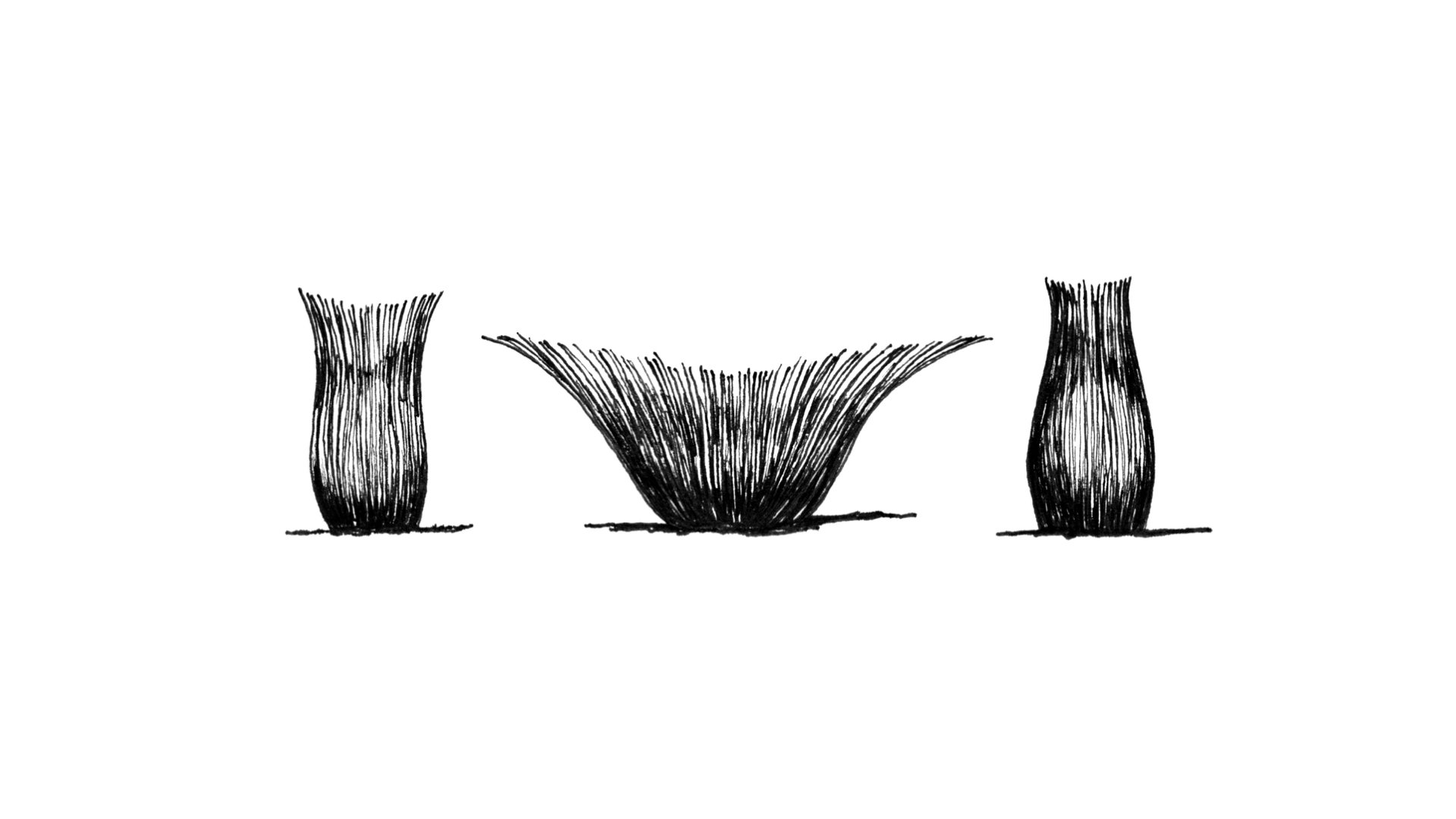
Kinetic Sculpture
I’ve always enjoyed how large public sculptures play a part in a city’s identity and with its civic engagement. They can serve as meeting points, become iconic landmarks, and add texture to the concrete jungle. The Alamo (pictured above), by B. Rosenthal, is an interactive kinetic sculpture in NYC’s East Village. Also known as The Cube at Astor Place, it can be spun around on one of its corners, so it never sits in the same way. Whenever I happened to be passing through the intersection, I delighted in peering over at the sculpture. Sometimes people would be playing with it, sometimes they’d just be sitting on the plinth; its dynamic element gave it an identity and added life to the area.
Likewise, I wanted to create a humble kinetic sculpture that would be different each time you came upon it. After some exploration, I decided to have it move in response to its environment, changing form according to its ambient temperature. Creating movement without the use of visible force or direct engagement gives the sculpture an air of independence, so it may seem more like a fellow participant in our day, sharing with us the passage of time and the changing seasons.
Concept prototype: Under a heat gun, the reeds expand as they warm up, and then close as they cool back down when the heat gun is switched off. The images below show the same behavior when sitting in the sun on a hot day.
Music: I Get Nervous, Lower Dens
The sculpture animates according to its ambient temperature, blooming open on a hot day and bundling up when it’s cold. I imagine the sculpture participating in our daily rhythm. In the morning, as the sun comes out, the sculpture begins to open. In the afternoon, it sprawls out wide and soaks up the rays; then, it slowly closes as the cool evening sets in; and eventually tucks tightly in for the night.
Likewise, it’s endearing to imagine the sculpture gently changing with the trees through the seasons. As with the blooming of the cherry blossoms, a personal favorite, it would be fun to keep an eye out for the first time the sculpture fully opens up after winter.


